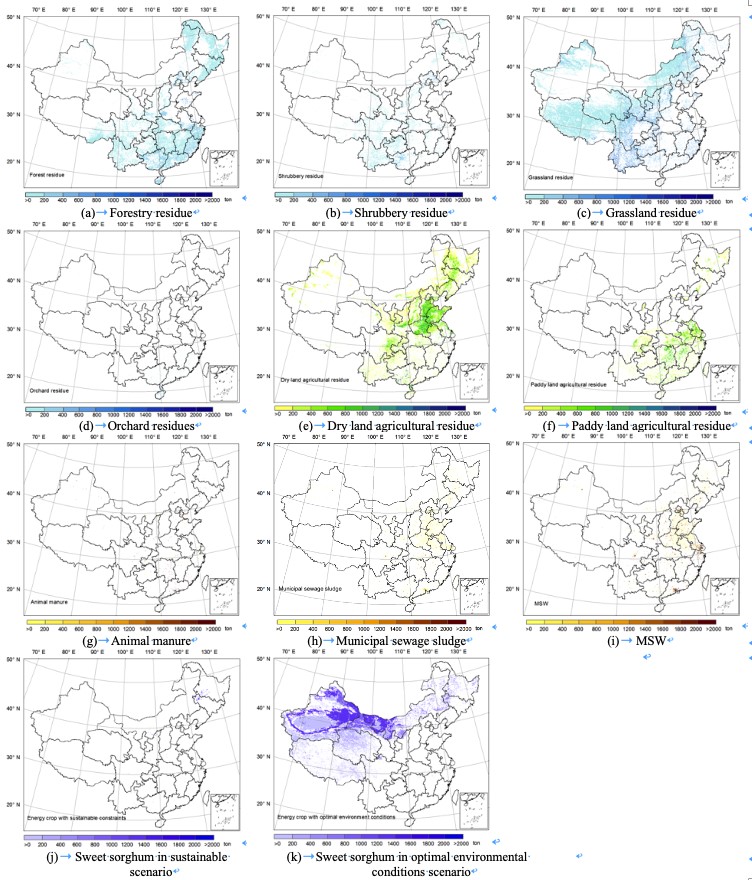On November 1, Nie Yaoyu, a PhD student of DESS, published the research paper entitled "Spatial distribution of usable biomass feedstock and technical bioenergy potential in China" in the well-known agricultural journal Global Change Biology Bioenergy as the first author, and his supervisor Cai Wenjia is the corresponding author. Article collaborators also include Associate Professor Chang Shiyan from Tsinghua Low Carbon Energy Laboratory, Professor Wang Can from the School of the Environment, Associate Researcher Fu Jingying from the Institute of Geography, Chinese Academy of Sciences, Assistant Researcher Hui Jingxuan from the Energy Research Institute of the National Development and Reform Commission, Associate Professor Yu Le from DESS, and Zhu Wanbin from China Agricultural University. Associate Professor, Professor Amit Kumar, University of Alberta, Canada, Huang Guorui, PhD student from DESS, and Guo Weichao, Postdoctoral Fellow of the University of California. The article points out that the spatial distribution of different types of biomass resources in China is significantly different at 1 km resolution: forestry residues are mainly distributed in the northeast, southwest, and southeast regions, grassland residues are distributed in provinces such as Inner Mongolia, and agricultural residues are concentrated in Henan And Shandong and other provinces, urban domestic waste and urban sewage are concentrated in population-intensive and urbanized areas such as Beijing-Tianjin-Hebei, the Yangtze River Delta, and the Pearl River Delta. Poultry manure is concentrated in provinces such as Inner Mongolia and Henan where animal husbandry or livestock breeding is developed.
From 2016 to 2018, the National Development and Reform Commission, the National Energy Administration and other ministries and commissions successively issued the series of policy plans, such as Thirteenth Five-Year Plan for the development of biomass energy, the Clean Heating Plan for Winter in the North Region (2017-2021), Guiding Opinions on Promoting the Development of Bioenergy Heating, Clean Energy Digestion Action Plan (2018-2020), proposed that the development of biomass energy should follow the guiding principles of "adjusting to local conditions" and "distributed development", and promote the development of biomass energy . Due to the diversity and uneven distribution of biomass types, uses (maintaining soil carbon pool balance, energy production, other industrial raw materials) and energy forms (electricity, heat, liquid biofuels and gaseous biogas), these policies plan implementation requires scientific support for high-resolution biomass resources and energy technology potential.
Therefore, this study integrated crop growth models, statistical downscaling, geographic information system models as the method to construct the Chinese 1 km resolution biomass resources and energy technology talent evaluation system, and got 2015 China 1 km resolution biomass resources and energy potential spatial database, and the Chinese land resources - biomass resources and biomass energy flow diagram. Studies have found that there were about 990 million tons of agricultural residues in China in 2015, 380 million tons of grassland leftovers, 310 million tons of forestry residues, 220 million tons of municipal solid waste and 1.63 billion tons of livestock waste biomass resources, used for energy-oriented use of biomass resources can produce 1.06 EJ (about 170 million standard coal) of thermal energy and 86 billion cubic meters of gas. Bioethanol from sweet sorghum grown on marginal land could meet 13%-312% of the 2015 E10 ethanol gasoline demand for bioethanol. At the provincial level, the production of bioethanol in Xinjiang, Inner Mongolia, Gansu, Jilin and Heilongjiang provinces can meet the demand of the province. Gansu, Qinghai, Heilongjiang, Inner Mongolia, Henan and Hebei provinces have great potential to develop clean alternatives to biomass heating.
He research work was supported by National Key Research and Development Projects, National Natural Science Foundation of China and State Grid Corporation of China's science and technology projects.
The paper link:https://onlinelibrary.wiley.com/doi/10.1111/gcbb.12651

Fig. 1 distribution of biomass resources with 1 km resolution for energy production in China in 2015